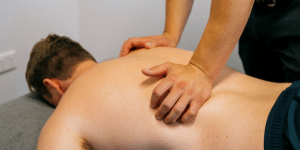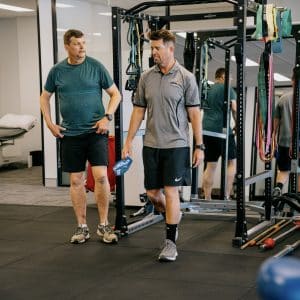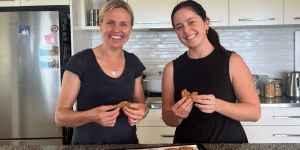Diastasis Recti (Abdominal Separation)
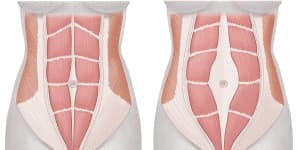
What is Diastasis Recti?
Diastasis Recti is a fairly common condition (30% of pregnancies and postpartum), in which the right and left halves of the Rectus Abdominis muscle spread apart at the body’s mid line fascia, the linea alba.
Widening and thinning of the mid line tissue occurs in response to the force of the uterus pushing against the abdominal wall, in conjunction with pregnancy hormones that soften connective tissue. A mid line of more than 2 to 2.5 finger-widths, is considered problematic.
Diastasis Recti reduces the integrity and functional strength of the abdominal wall and can aggravate lower back pain and pelvic instability.
Women expecting more than one baby, petite women, those with a pronounced sway back, or with poor abdominal muscle tone are at risk. For some women, it’s simply how their bodies respond to pregnancy.

Signs of Diastasis Recti:
If there is a gap of more than 2.5 finger-widths when the Rectus Abdominis is fully contracted or the gap does not shrink as you contract your abdominal wall. Don’t panic if you feel a “hole” in your belly in the first few weeks postpartum. Everyone’s connective tissue at the midline is lax after childbirth.
As you recover, your midline will slowly regain its former density and elasticity, and the “hole” will become shallower. Unfortunately, flurries of misconception swirl around abdominal separation and exercise during and after pregnancy in general. A common piece of advice is to “do a lot of crunches”, however this can actually worsen abdominal separation.
Common myths about Diastasis Recti:
- Diastasis Recti causes permanent damage to your abdomen
- Diastasis Recti causes permanent bulging of the abdomen i.e. “mummy-tummy”
- Diastasis Recti causes pain
- The abdominal muscles will always be weaker after childbirth
None of these statements are true!
If at any time you see a round, hard, or painful bulge protruding from your belly button area, or along your mid line, consult with your OB/GYN.
Special Precautions for Women with Diastasis Recti:
Things to avoid:
- Abdominal exercises that flex the upper spine off the floor or against the force of gravity, such as: crunches, oblique curls, “bicycles”, roll ups/roll downs, etc.
- Any exercise that causes your abdominal wall to bulge out upon exertion
- Lifting and carrying very heavy objects
- Intense coughing without abdominal support
- Exercises requiring lying backward over a large exercise ball
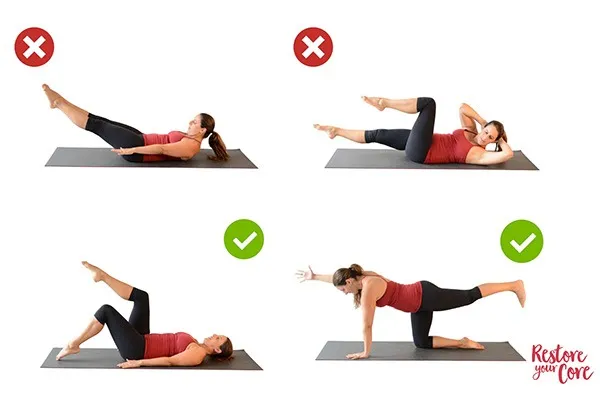
During pregnancy or after childbirth, if you develop a cough place your hands across your belly and manually splint and support your abdomen together during coughing episodes.
To protect your mid line during pregnancy, always use the “log roll” manoeuvre when rising from the floor or out of bed.
You can do a lot to help prevent or lessen the severity of Diastasis Recti by strengthening your deepest abdominal muscle, your Transverse Abdominis (TvA). The TvA is the body’s internal “girdle” and when contracted, compresses the abdominal wall.
If you would like more information on diastasis recti, are experiencing symptoms, or would like to learn how to return to exercise safely, book online with one of our qualified physiotherapists, or contact us here.

